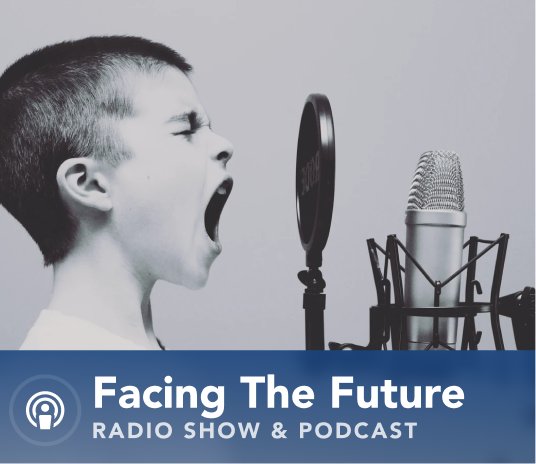This week on Facing the Future, Concord Coalition Policy Director Tori Gorman and I spoke with Mark Zandi, chief economist for Moody’s Analytics, to help us parse through recent economic data crosscurrents, seemingly buffeted by the effects of the Omicron variant on employers and employees. On the one hand, the unemployment rate has fallen to 3.9% and real GDP rose 5.7% overall last year, the highest annual growth rate since 1984.
On the other hand, as economists like to say, those positive numbers are clouded by two worrisome trends; the first is inflation, which grew by an annual rate of 7% in 2021, the highest year-to-year growth in consumer prices since 1982. The second factor is the unpredictable nature of the stubborn COVID-19 pandemic. Every time a new variant rises across the world it disrupts everything from the availability of the labor force to the global supply chain, and puts a strain on the health care system. Zandi says overall, he is optimistic for economic prospects in 2022.
“Growth will slow, you can’t maintain 5.7% growth for very long,” said Zandi. “But it will be strong enough so that the economy should be back to something we consider close to full employment by the end of the year. An unemployment rate that is somewhere in the low to mid 3% [range], and somewhat higher labor force participation. I also expect inflation to moderate. It won’t go back to the Fed’s target by the end of the year. It might take longer than that, just given that the pandemic is creating havoc in supply chains and the labor market. But it will certainly be moving in the right direction and I do think by mid 2023 we’ll be close to the Fed’s target.”
Zandi’s optimistic views are based on a number of assumptions, chief among them that the pandemic will recede, meaning that each new wave of infection or new variant will cause less economic and health care disruption overall than the last. However, he says there is still a lot of risk that the combination of the pandemic and inflation numbers could slow economic and job growth.
Several economists have raised concerns that the supply chain could still be disrupted by the COVID-19 Omicron variant if the Chinese government reverts to lockdowns in regions with large manufacturing operations in order to reduce transmission of the virus. Zandi says a scenario like that is less likely in 2022 than what we saw in 2021 because other parts of Asia can pick up the slack.
“The Delta wave of the pandemic nailed us, but it really creamed Southeast Asia where a lot of supply chains begin,” said Zandi. “If you go back to the summer/fall of last year in Asia, they were very lightly vaccinated. Outside of China in Southeast Asia there were just no vaccines. That’s changed dramatically, and I think policies have changed. I don’t think Asian countries outside of China are going to shut down like they did in the Delta wave. So I suspect supply chains will start to iron themselves out. Also, with these higher prices, businesses are making a lot of money. Profits are very high and that is a very strong incentive to invest and expand capacity, and that’s what we’re seeing. Investment is very strong. It will take a little bit of time to get online and have some impact on the shortages, but by this time next year I expect a lot more capacity coming online and that will bring prices down.”
The pandemic is also the major culprit behind the volatility of the reporting of economic data, according to Zandi, both in terms of response rates to economic data surveys, and the impact on the labor market of new COVID variants.
“A pandemic wave rolls over us and when that happens, it does a lot of damage,” said Zandi. “People get sick, they stay home and take care of sick family members, or are fearful of going to work and getting sick. So you see the job market kind of hit a wall, particularly in those industries that are kind of on the front lines: leisure, hospitality, retail, health care, recreational – industries that are most directly impacted by the pandemic. And then the wave passes through and the economy comes right back to life. People start doing things again and get their jobs back, so you get these big swings in monthly job data.”
Later in the show, I spoke with The Concord Coalition’s policy director Tori Gorman and our chief economist Steve Robinson about what legislation will likely be taken up by Congress now that members are back to work. Among the competing priorities: funding the federal government before appropriations run out on February 18th, passing legislation strengthening American competitiveness vs. China, and negotiations over those pieces that remain of President Biden’s Build Back Better climate and social spending bill.
These existing priorities must now compete with two new ones: filling a vacancy on the Supreme Court created by the impending retirement of Justice Stephen Breyer, and appropriating funds to deal with rising international tensions between Russia and NATO over a possible Russian invasion of Ukraine.
Hear more on Facing the Future. I host the program each week on WKXL, NHTalkRadio.com (N.H.), and it is also available via podcast. Join me and my guests as we discuss issues relating to national fiscal policy with budget experts, industry leaders, and elected officials. Past broadcasts are available here. You can subscribe to the podcast on Spotify, Pandora, iTunes, Google Podcasts, Stitcher or with an RSS feed. Follow Facing the Future on Facebook, and watch videos from past episodes on The Concord Coalition YouTube channel.





